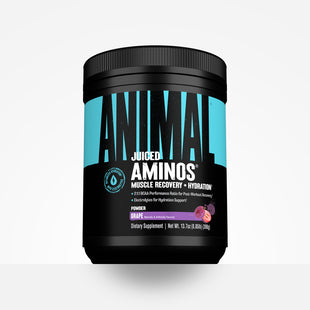Genetics
Genetics plays a major role in determining what body part will be weak. We all know the guy that has monster calves but never touched a weight. Big thanks go to his mom and dad for the freak status DNA. Similarly for weak body parts, it’s likely one of our parents were lagging in that department as well. For me, chest wasn’t in the genetic cards. At least I did get some pretty big triceps out of all that bench pressing. This brings me to my next point.Exercise Selection
All those years spent doing board presses, partial reps, and using a bench press suit caused a lot of tricep hypertrophy. Arms have always been a strong point for me so they exploded when I started powerlifting and is the reason I was so good at bench press. But my exercise selection did not stimulate my pecs optimally and my triceps took over on all pressing movements.Program Design
I broke down why certain exercises weren’t the best choices for big pecs, but looking back my program wasn’t set up right either. Back then my program was heavily based on improving strength and much less on hypertrophy. I was typically hitting 5 reps or less on my chest movements, which is great for strength, but not the optimal rep range for hypertrophy. Although I trained chest twice per week, which is the right training frequency for weak parts, overall volume was still not high enough.Nutrition
We can train a muscle to death, but improvement won’t happen if we do not provide it with the raw materials it needs to rebuild itself. We need to be in a calorie surplus on the days we train the weak body parts. Limiting calories will only limit your capacity for recovery. But we can’t just eat big without looking at food quality and timing. Back in my powerlifting days I ate big, but quality wasn’t the best because body fat gain wasn’t a concern. Increasing body fat leads to decreases in leptin and increases in insulin resistance. In other words, your muscle is less responsive to the uptake of nutrients.Injuries and Imbalances
My big mistake back then was not getting soft tissue work and not training supporting muscles enough. I had numerous pec injuries that caused reduced elasticity in the muscle, scar tissue build up, and neural issues. I changed my form more to take stress off my pecs, which caused my tris to take over pressing. I also didn’t train my back enough to balance out my frequent pressing. So, find a good masseuse and don’t forget to train the supporting musculature.Take Action Against Weakness
We can’t change our genetics, but we can implement a plan to the best of our ability to combat lagging body parts. Our first step is to look at our program design. Our program should be training our weakness frequently without beating our joints to death. If you have more than three weak body parts, you are more than likely just weak overall and need a general balanced plan. If your body’s imbalanced, however, we will need an unbalanced plan. I recommend focusing on no more than 2 weak body parts at a time before moving on to a different muscle group. This plan also needs a form of progression to slowly build more volume as we adapt.Let’s make chest our example and build a training split that will progress over the next 10 weeks. What we can do is build a plan that starts training chest every 5 days but increases to training chest every 4 days. This way we are stimulating hypertrophy more frequently and progressively increasing chest training volume.
Training Split
Weeks 1-5 (training chest every 5 days)Day 1: Chest/tricep
Day 2: Back/biceps
Day 3: Legs/calves
Day 4: Shoulders/calves
Day 5: off
Repeat
Day 1: Chest/calves
Day 2: Back/rear delt
Day 3: Legs/calves
Day 4: Chest/front and side delt
Day 5: Arms
Day 5: off
Repeat
Training Volume
Now that our training split is set up, we need to plan our set and rep scheme to decide on training volume. Training volume can be considered the number of sets and reps you do for chest in one week. We are only counting work sets, not warm ups. For example, if you are currently training chest once per week and doing 10 work sets of 8-12 reps, this is your starting point. Since we are trying to train chest more frequently, take that same number of sets but do them every 5 days to start, then eventually every 3 days. You will need to adjust the number of sets based on your personal recovery capacity.Rep ranges will vary in order to take advantage of different mechanisms that stimulate hypertrophy. Each time we train chest we will rotate the rep ranges from 5-8 reps to 10-12 reps to 15-20 reps.
Workout
Our training split and training volume are set up; now we can build our workout. For this plan, we can rotate between two different chest workouts. Plug each workout into the rep scheme from above. I chose exercises that would develop all areas of the chest and accommodate progression. I like to choose machines that are safe and really isolate the use of the chest.Workout A
- Hammer Strength Incline Press
- Flat DB Press
- Machine Dips
- Incline Cable fly
- Incline BB press
- Weighted Dips
- Standing Cable fly
Exercise execution
We can plan the perfect program, but if we perform the exercise incorrectly then we may emphasize other body parts unintentionally. If you don’t feel the intended muscle group contracting, try different positioning. If that doesn’t work, a different movement might be better. Focus on squeezing the muscle to move the weight. Verbal cues can help as well. On chest, the thought “squeeze the bar together” is an example of a good verbal cue. Also keep your chest up and shoulders pulled back. For presses, the wrists and elbows should be in a straight line. If you’re still having trouble, find a trainer that can guide you.Nutrition on Weak Body Part Day
We have a plan to blast our weak body part, but we need to have recovery on point. We are going to be training the weak part more frequently, so we need to recover as quickly as possible. Here are some guidelines to go by:- Be in a calorie surplus on your weak body part day of at least 500-1000 calories above maintenance.
- Have a preworkout meal 90 minutes prior to training with approximately 30-50g of carbohydrates more than usual.
- Intraworkout Nutrition Mix (mix in 500ml of water, sip throughout training, finish 15 minutes prior to end of workout)
- 1 scoop Animal Juiced Aminos
- 30-50g of Highly Branched Cyclic Dextrin
- 5g Creatine Monohydrate
- 6g Citrulline Malate
- 2g beta alanine
- 5g Hydromax
- Post workout Plan
- Following training, consume 20-50g of whey protein and 50-100g of Highly Branched Cyclic Dextrin.
- 90 minutes after training, consume a whole meal with a balance of protein, carbs, and fats.




















